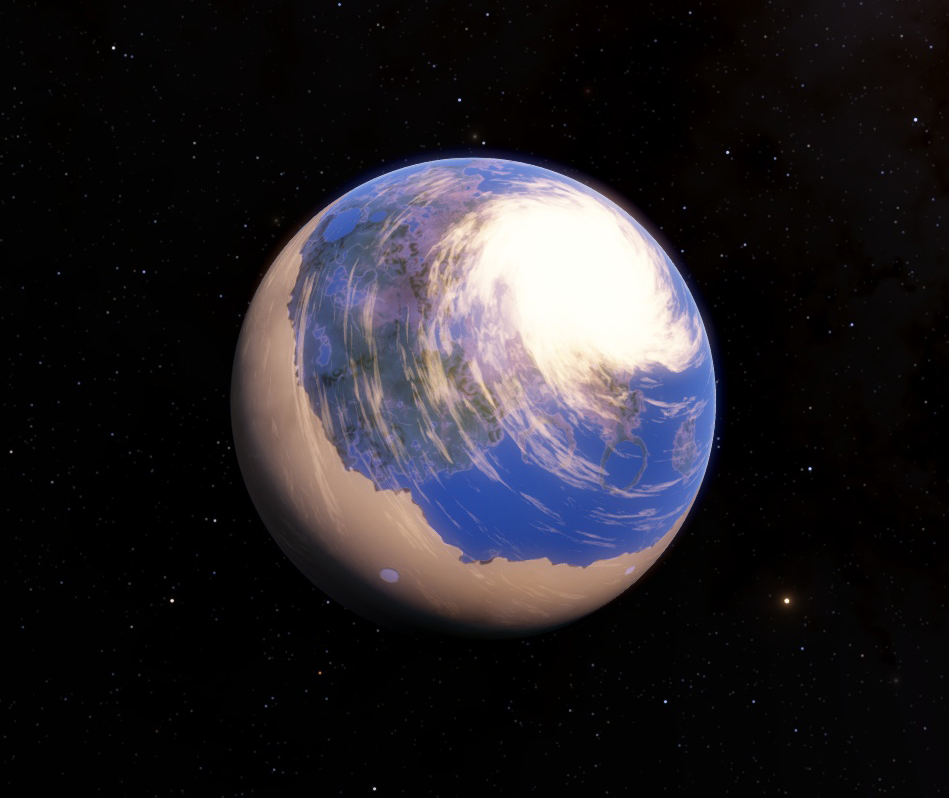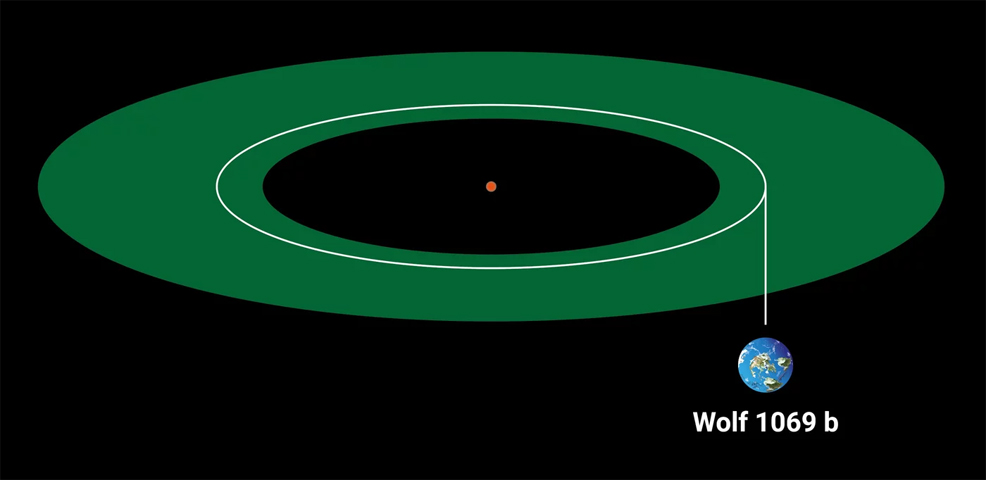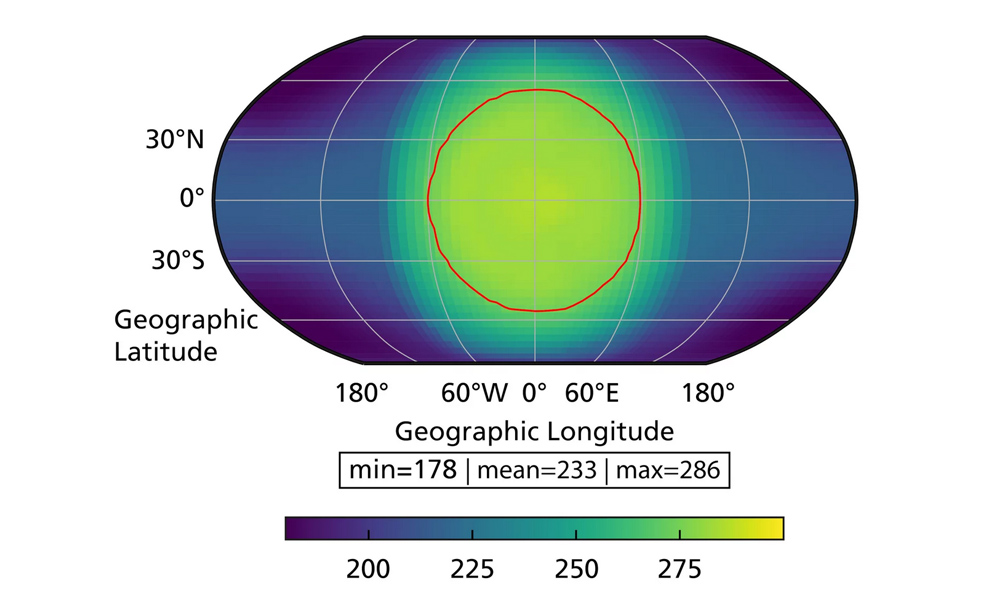
7th February 2023 Earth-sized exoplanet found in habitable zone German astronomers have discovered an Earth-sized exoplanet in the habitable zone of Wolf 1069, a red dwarf star located 31 light years away. The new planet, designated Wolf 1069 b, is believed to be tidally locked, which means that one side is constantly facing its parent star, while the other is permanently in darkness. As illustrated in the computer rendering below, this is likely to create two distinct climates on the surface, with warmer conditions on the bright side and perpetual winters on the night side. Despite these contrasts, the research team believes it could provide durable habitable conditions across a wide area of its dayside. The absence of any obvious stellar activity or intense UV radiation increases the chances that Wolf 1069 b could have retained much of its atmosphere. The planet is therefore a promising target to search for biosignatures.
The CARMENES survey, which began in 2016, is an ongoing project to study around 300 M-class dwarf stars for signs of exoplanets. As part of this, a team from the Max Planck Institute for Astronomy (MPIA) in Heidelberg, Germany, used the 3.5m Calar Alto Observatory in Spain, the largest telescope in mainland Europe. "When we analysed the data of the star Wolf 1069, we discovered a clear, low-amplitude signal of what appears to be a planet of roughly Earth mass," explained MPIA's Diana Kossakowski. "It orbits the star within 15.6 days at a distance equivalent to 1/15th of the separation between Earth and the Sun." Despite its close range, the planet only receives about 65% of the incident radiant power of what Earth gets from our Sun. The star Wolf 1069 emits much less radiation than our Sun, and its surface is cooler, making it appear orange. These properties result in reduced heating power. "As a result, the so-called habitable zone is shifted inwards," added Kossakowski. Therefore, planets around red dwarf stars such as Wolf 1069 can be habitable even though they are much closer than the Earth is to the Sun.
The CARMENES instrument on the Calar Alto Observatory uses two separate spectrographs, for both visible and near-infrared wavelengths. It detected the new exoplanet using the radial velocity method, which senses tiny "wobbles" in a star's orbit caused by a planet's gravity. These signals are so faint that they require complex and sophisticated techniques to distinguish them from background noise. The team at MPIA described their work in a paper that appeared recently in the peer-reviewed journal Astronomy & Astrophysics. Although its size (1.08 Earth radii) and mass (1.26 Earths) are known, the atmospheric composition of Wolf 1069 b is currently unconfirmed. If the planet is an airless rocky world, the astronomers calculate its average surface temperature would be only 250 Kelvin (- 23 °C; - 10 °F). As shown in the diagram below, however, an Earth-like atmosphere with equivalent greenhouse effect would mean its average temperature could be as high as 286 Kelvin (+ 13 °C; 55 °F), keeping water in a liquid state over a large portion of the planet's dayside (indicated within the red line). Based on their computer simulations, the team concludes that the planet could likely maintain moderate temperatures and surface liquid water for a wide range of atmospheric conditions and surface types.
An atmosphere would also protect against high-energy electromagnetic radiation and particles from either interstellar space or the central star. Red dwarfs are notorious for their high levels of activity, often producing massive stellar winds and intense UV radiation. Similar to what the Sun did to Mars, they may strip off a planet's atmosphere, which renders their surfaces sterile. The good news is that Wolf 1069 appears benign, based on early studies. Because of its favourable prospects regarding habitability, Wolf 1069 b joins a small group of worlds that are prime targets to search for biosignatures. However, such observations are currently beyond the capabilities of astronomical research. The next generation of telescopes should be powerful enough to definitively confirm biosignatures on planets like Wolf 1069 b. "We'll probably have to wait another ten years for this," said Kossakowski. "Though it's crucial we develop our facilities considering most of the closest potentially habitable worlds are detected via the radial velocity method only." Wolf 1069 b is the latest in a string of recent exoplanets to be found with sizes and masses similar to Earth. Last month, the James Webb Space Telescope discovered LHS 475 b (the spacecraft's first confirmed exoplanet), while a team in Spain found two potentially Earth-like planets, GJ 1002 b and GJ 1002 c.
Comments »
If you enjoyed this article, please consider sharing it:
|









